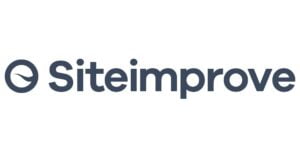With over 450 million websites built on WordPress, it’s surprising that only a fraction are ADA (Americans with Disabilities Act)-compliant. While WordPress strives for inclusivity, ensuring compliance with the ADA is ultimately your responsibility as a website owner.
This guide will walk you through:
Let’s dive in!
Achieving digital accessibility compliance standards has never been easier. Thanks to innovative, automated solutions on the market today, you don’t need to use precious business resources toward building a new website, coding, etc.
Making your WordPress or WooCommerce website ADA-compliant doesn’t need to be complicated. In fact, you may not even need to touch the code of your site at all.
Along with using a WordPress accessibility plugin, there are other third-party solutions available that can simplify the process, too.
 | |||
| Existing Customers |     |     |     |
| Technology | Fully automated web accessibility solution | Fully automated web accessibility solution | Manual web accessibility solution and automated browser extension and plugin |
| Compliant in Countries | |||
| Compliance | WCAG | ADA | AODA | Section 508 | EAA | WCAG | ADA | AODA | Section 508 | EAA | WCAG | ADA | Section 508 | EAA |
| Prices | Starts at From $49 | Starts at From $49 | Starts at Custom Quotation Required |
| Partner Program (for Web Agencies) |
|
|
|
| Customer support | Chat & Email Support | Chat & Email Support | Email & Phone Support |
| Free Demo |
Yes Free demo available |
Yes Free demo available |
Yes Free demo available |
| Free Trial |
No credit card needed 7-day free trial |
Credit card required 7-day free trial |
No Free website accessibility audit available |
Even without disabilities, managing tiny font sizes and eye-straining color schemes feels slightly abusive. Those with visual impairments can’t read your content at all—you may as well hang a sign, “We don’t serve the blind.”
Here’s what you can do to fix this:
First, adjust the column widths so there are roughly 7-10 words on each line. This ensures that your font size won’t set off flags. Next, adjust the color scheme of your website so that the text stands out from the background and complies with WCAG color contrast requirements as stated in SC 1.4.3 Contrast (Minimum) (1) and SC 1.4.11 Non-text Contrast (2). You can use the WP Accessibility Plugin or other similar tools to test the contrast of the text against the background.
If you’re concerned about SEO best practices, you should already use ALT text on all your images. Regarding accessibility, ALT text allows higher comprehension for those using screen readers. Use the “alt” attribute to provide a descriptive and accurate alt text for the images.
Whether designing a table of contents, linking to a product page, or making a CTA button, it’s important to use specific and clear directions. For example, a CTA button that says “Read More” is pretty vague. A thoughtful alternative like “Read More About Web Accessibility” informs the screen reader user where the link will take them.
If your website contains ambiguous links, it prevents those using screen readers from accessing the rest of your site.
The free web accessibility scanner we keep presenting lets you know where your website stands. In moments, it lays out a complete and up-to-date evaluation of your website in a tidy report. It instantly recommends at least one solution to fix each compliance issue—showing you precisely what you need to do next.
Compliance is an investment in the longevity of your business and your relationship with your customers. Investing a reasonable and affordable sum in an automated solution is worth it. As a result, you will get a fully compliant website, security against lawsuits, the ability to reach a new audience base, and perhaps most importantly, peace of mind. After AccessibilityChecker scans your website, it recommends the most suitable accessibility software solution based on your local laws.
Understanding the fundamentals of ADA compliance and knowing how to evaluate your website’s accessibility can make a significant difference in creating an inclusive online environment. Let’s delve into the basics of ADA compliance and explore effective methods to test the accessibility of your website
According to Title 3 of the ADA, businesses must make modifications to accommodate people with disabilities. Even though websites weren’t originally named in the ADA, recently, courts have ruled that they should be included.
If you use WordPress, your website also needs to conform to ADA and WCAG guidelines.
Read our definitive guide on ADA compliance to find out more, including step-by-step instructions on how to make your website fully accessible and ADA compliant.
A Fast and Efficient Way to Comply with Web Accessibility Guidelines
Our top-recommended web accessibility solution is accessiBe. This advanced AI-powered tool makes it easier to apply the latest WCAG standards to your site by simply adding a line of code to the back-end.
Accessibility helps create usable products, services, and environments for people with disabilities. For example, adding alternative or ALT text helps people with visual impairments understand the media on your site.
Everyone has the right to access the web, including people with disabilities. Despite the ADA not explicitly mentioning websites, it’s broad enough to extend into the digital realm. The DOJ ruled that the lack of accessibility for websites may violate the ADA. This means making your website accessible can protect your brand from costly lawsuits and damaged reputation.
The U.S. Centers for Disease Control and Prevention estimate that 1 in 4 U.S. adults live with a disability (3). By making your website accessible with a few simple modifications, you’re opening your business up to many new customers. Businesses continue to lose sales due to inaccessibility – don’t let your business be one of them.
Providing the best possible user experience is what SEO is all about, which is why web accessibility and SEO go hand-in-hand (4). For example, having a cleaner interface and smooth navigation decreases your bounce rate (Great for SEO). Once you start looking at SEO and web accessibility best practices, you can see why they’re so closely related. Non-compliance with accessibility regulations is far more costly and damaging than actually taking the time to make your website accessible.
Non-compliance with the ADA can cause some problems for your business.
For one, ADA lawsuits are rising, which means you could face unnecessary legal costs and months of hassle by not making your website accessible.
Then there’s your brand’s reputation. Being involved in an ADA lawsuit can negatively impact your brand image and reduce the size of your customer base.
Lastly, there’s general social responsibility – do you want your business to be deemed less socially responsible than those doing their part to create a more inclusive society?
Of course not!
So let’s look into the issues you can encounter if your site doesn’t comply with accessibility standards and policies.
Law firms are keeping a close eye on WordPress websites because they know that non-compliance with ADA laws and regulations can make them a lot of money. Should you receive a website accessibility demand letter, you can expect to pay a settlement cost of at least $5,000. However, should the matter go to court, settlement costs can extend into tens of thousands of dollars.
One single lawsuit against your company for not meeting digital accessibility standards can quickly add up to $10,000 (5) and upwards.
Court fees, lawyer fees, settlement costs, and more can quickly drain your business of essential resources.
Furthermore, your business risks alienating entire user populations from your products or services. If every 1 in 5 people navigates the internet with some disability or limitation, you could miss out on an entire population of potential customers and clients.
What does it say about a business when it’s in trouble with the law? Most of the time—it’s not a positive headline. Even though there may be no intention to discriminate against people with disabilities, a run-in with an ADA lawsuit paints the picture of a business that doesn’t care for its customer’s or employees’ needs. Failing to facilitate a better user experience and more inclusive environment–that results in higher traffic–also says a lot to investors and partners about the staying power and stability of your business.
It’s pretty simple. Many people with disabilities are left out and forgotten. Some speak up for themselves, but many remain silent, missing out on connection and productivity while they wait for change. Don’t miss out on this opportunity to lead the way to a more inclusive online world.
Automated web accessibility solutions have never been so advanced or affordable. Thanks to advances in technological innovation, top automated solution companies like accessiBe harness the power of AI and machine learning to ensure your website remains a lean, mean, compliant machine.
The need to maintain digital accessibility isn’t going anywhere, and the urgency and need for compliance will likely only grow. It’s time to forget free plugins that only offer partial or inadequate compliance solutions. You can protect your website from expensive and resource-sucking lawsuits for a minimal cost while reaching a broader and more diverse audience.
Don’t waste any more time; get started today.
All WordPress websites need to be ADA compliant. This is made easy with plugins. You can install several plugins to become compliant and avoid costly lawsuits. accessiBe is one of our top recommended web accessibility plugins.
Online users who can’t use a mouse generally rely on the Tab, Enter and arrow keys to navigate a menu. Menus should be identified using the <nav> element, and each menu item should be labeled to make it easier to understand. You can use aria-label in your HTML code to label a menu item. Many of today’s WordPress themes can make a menu accessible without manual inputs – several plugins are also available.
One of the easiest ways to ensure that your WordPress website is ADA compliant is to install an ADA compliance plugin. Other aspects you should focus on include adding ALT text to all images, using clear calls-to-action, and ensuring any third-party features won’t interfere with usability and accessibility.
A WordPress plugin that is ADA compliant will generally scan a website for any accessibility issues and outline how they can be fixed. These plugins rely on WCAG standards to identify problems that could lead to web accessibility lawsuits.
To ensure that all website users can access a search form on your WordPress site, it’s essential to label the input fields, offer instructions on how to complete the form, define sufficient and adequate roles for various form elements, and add accessible user notifications. It’s also recommended that you validate user input and set focus states for any interactive elements.
I thoroughly enjoyed reading your blog post as it provided me with valuable insights and information. Additionally, I would like to contribute some supplementary points that could benefit your readers:
1.Optimizing color contrast
2. Providing alternative text for images
3. Ensuring keyboard navigation
4. Implementing proper heading structure
5. Using semantic HTML
6. Making forms accessible
7. Enabling screen reader compatibility
These points offer additional perspectives on the discussed topic.